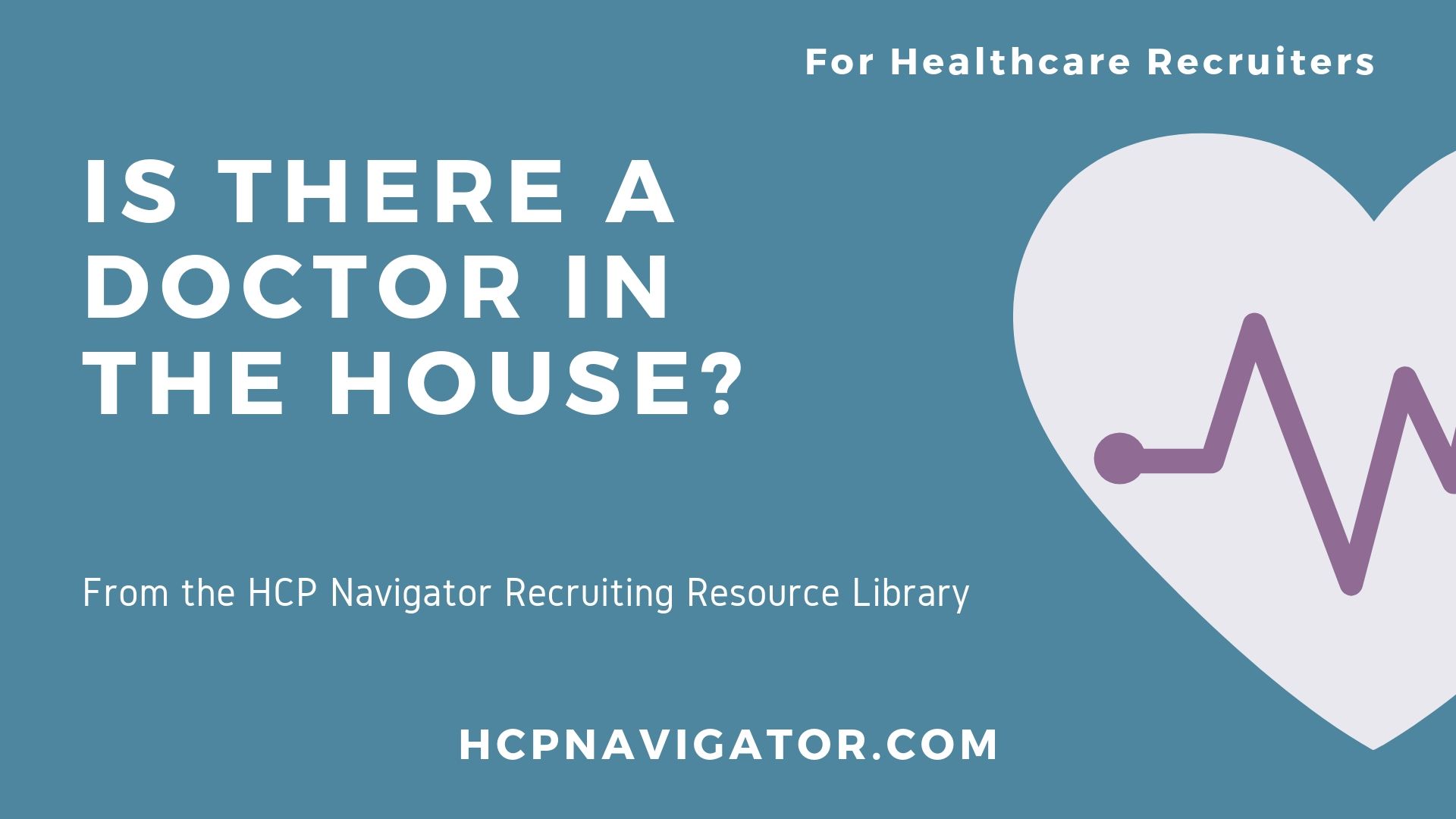
Is There a Doctor in the House?
Most post-apocalyptic movies feature a scene where survivors explore an abandoned hospital in search of medical supplies. At that moment, what they really need is a good doctor, but there are none to be found. Healthcare in the United States is not on the brink of eradication, but every healthcare recruiter knows the risk of a physician shortage is a genuine threat to patient care across the nation.
PHYSICIAN SHORTAGE
According to data published in March 2018 by the AAMC (Association of American Medical Colleges), the United States could see a shortage of between 42,600 and 121,300 physicians by the end of 2030. Over the next 11 years, the study estimates a potential shortfall of up to 49,000 primary care physicians and 72,000 physicians in other specialties.
This deficit will come from an increase in demand in conjunction with a gradual decrease in supply. While the U.S. population will continue to grow by around 10%, the aging population of citizens over 65 will increase by as much as 50% at the end of the next decade. With seniors having much higher health care needs than younger populations, the demand for services will continue to grow. In addition, this increase in the aging population will also affect physician supply. One-third of all presently practicing physicians will be 65 or older by the end of 2030. If these physicians decide to retire within the next 11 years, this could have the greatest impact on supply. The healthcare recruiting outlook is challenging to say the least.
RECRUITERS: A CALL TO ACTION
Baby boomer retirement, changing demographics, and an increase in the number of insured due to the Affordable Care Act are some of the factors working together to create this physician deficit. Healthcare recruiters must become more proactive and change the way they attract, locate and secure the best physicians. Here are some of the proactive steps healthcare recruiters can take to meet the challenge:
OFFER COMPETITIVE PACKAGES
Due to today’s high demand, new physicians are seeking more competitive compensation. One way to surpass the competition and place your institution top of mind with candidates is to simply offer more. However, starting salary is not the only way to compete. Bonuses are another way of attracting talent. Initial signing bonuses can secure a candidate, while retention bonuses paid out in 6 to 12 month intervals will help you keep your talent. Structured, merit-based salary increases beyond annual raises promises to be another enticement. Offering financial stipends to assist with relocation or student loan repayment is certainly enticing and will be an additional way to make your opportunity stand out from the competition. Nevertheless, don’t wait until the interview or job offer to discuss these competitive package offerings; make sure and include these details in your posting to grab the attention of active and passive job seekers.
CONSIDER PROGRESSIVE PERKS
Most institutions offer similar compensation and benefits packages. Unconventional perks may be a creative alternative to pique a candidate’s interest. For example, many physicians complain about burnout and a lack of work/life balance. These could be addressed with some creative amenities, such as on-site daycare, fitness facilities or memberships, meditation centers, stress relief classes, and even in-house massage therapists. You could also help them achieve personal or professional goals by offering complimentary retirement planners, financial advisors or legal assistance.
HIGHLIGHT TRAINING AND ADVANCEMENT
Most healthcare candidates have spent their entire lives learning, and they don’t want this to end after the initial hire date. Many have long-term goals in mind that involve further training, development and future career advancement. Over 70% of millennials report that they are likely to exit their jobs if their skills are not being adequately developed, and over 90% of employees typically change companies when seeking advancement. Providing on-the-job training and educational opportunities is the first step toward attracting and keeping talent. The second, and most important step, is to outline a path towards future growth and career advancement. Highlighting your program to provide training and advancement opportunities will help healthcare candidates look beyond today’s job and see tomorrow’s career.
FEATURE FLEXIBLE SHIFTS AND TIME OFF FOR SERVICE
Most physicians know that they are going to work long hours, but offering some flexibility and even time off for medical sabbaticals can be enticing. Creative scheduling, such as working three 12-hour days a week or weekend-only shifts, can make your position more desirable. Others may value receiving some time off for personal renewal and medical learning. For example, one’s need to help others may be met through allowing physicians to participate in Doctors Without Borders. Therefore, flexibility and time off can serve as motivators to present to doctors during recruitment.
IN SUMMARY
Today’s tight healthcare candidate pool is changing the way we recruit, hire and retain physicians to ensure the highest quality of care and services. As baby boomers continue to retire, our country’s demographics change, and the number of insured increase, the doctor deficit will continue to expand. Offering the highest salary is one way to attract healthcare candidates, but it’s not the only method, nor is it the most effective. Recruiters may be able to effectively attract and secure the best physicians by offering competitive packages, considering progressive perks, highlighting training and advancement, and featuring flexible schedules and time off.
If you are struggling to source candidates in today’s difficult recruiting environment, HCP Navigator can help. Check out our family of products and services proven to help healthcare recruiters find, track, and hire quality candidates. You can get started right away with HealthcareJobFinder, the no-cost job board where jobs noticed.
Finally, don’t forget to sign-up for our newsletter to get the latest additions to HCP Navigator’s Recruiting Resource Library.
Stay Informed
Sources:
https://news.aamc.org/press-releases/article/workforce_report_shortage_04112018/
https://www.hospitalrecruiting.com/blog/5249/creative-solutions-for-healthcare-recruiting/
https://www.hospitalrecruiting.com/blog/4243/how-physician-recruiters-overcome-candidate-shortage/
https://www.hospitalrecruiting.com/blog/5194/attract-and-retain-talent-through-career-development/



